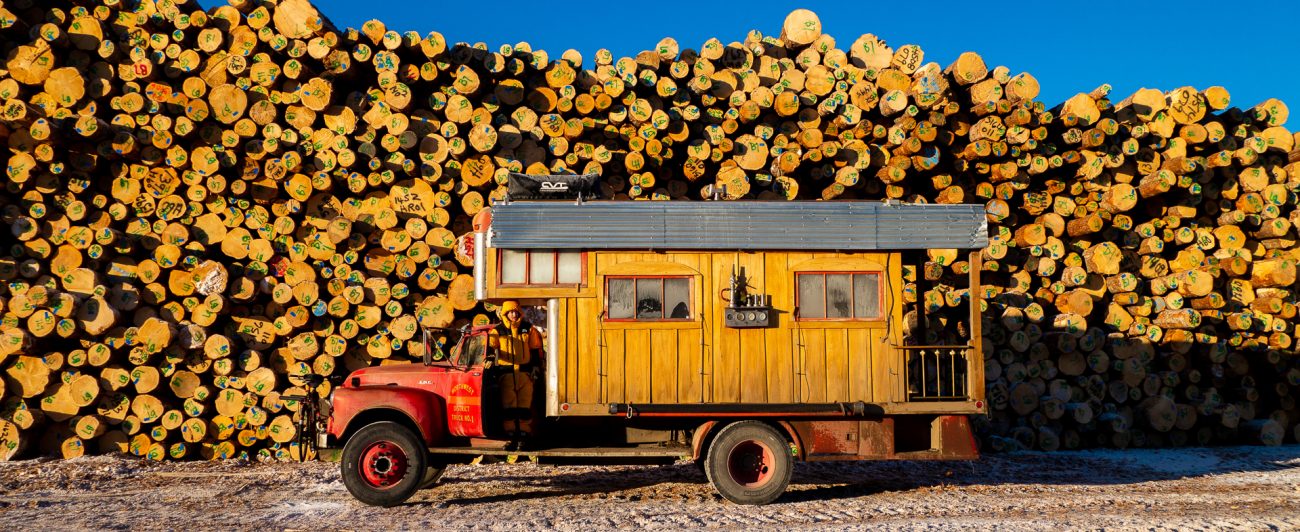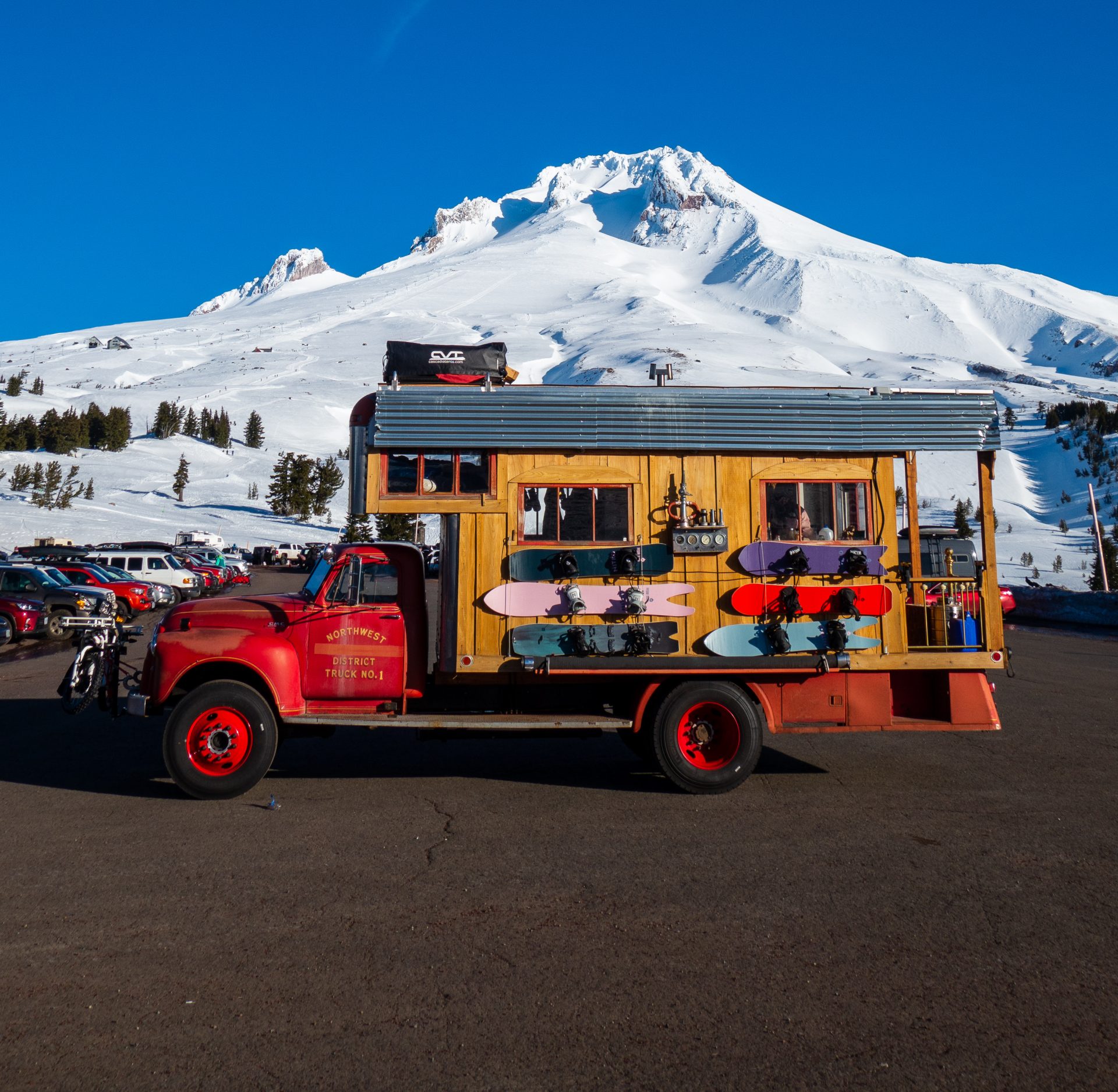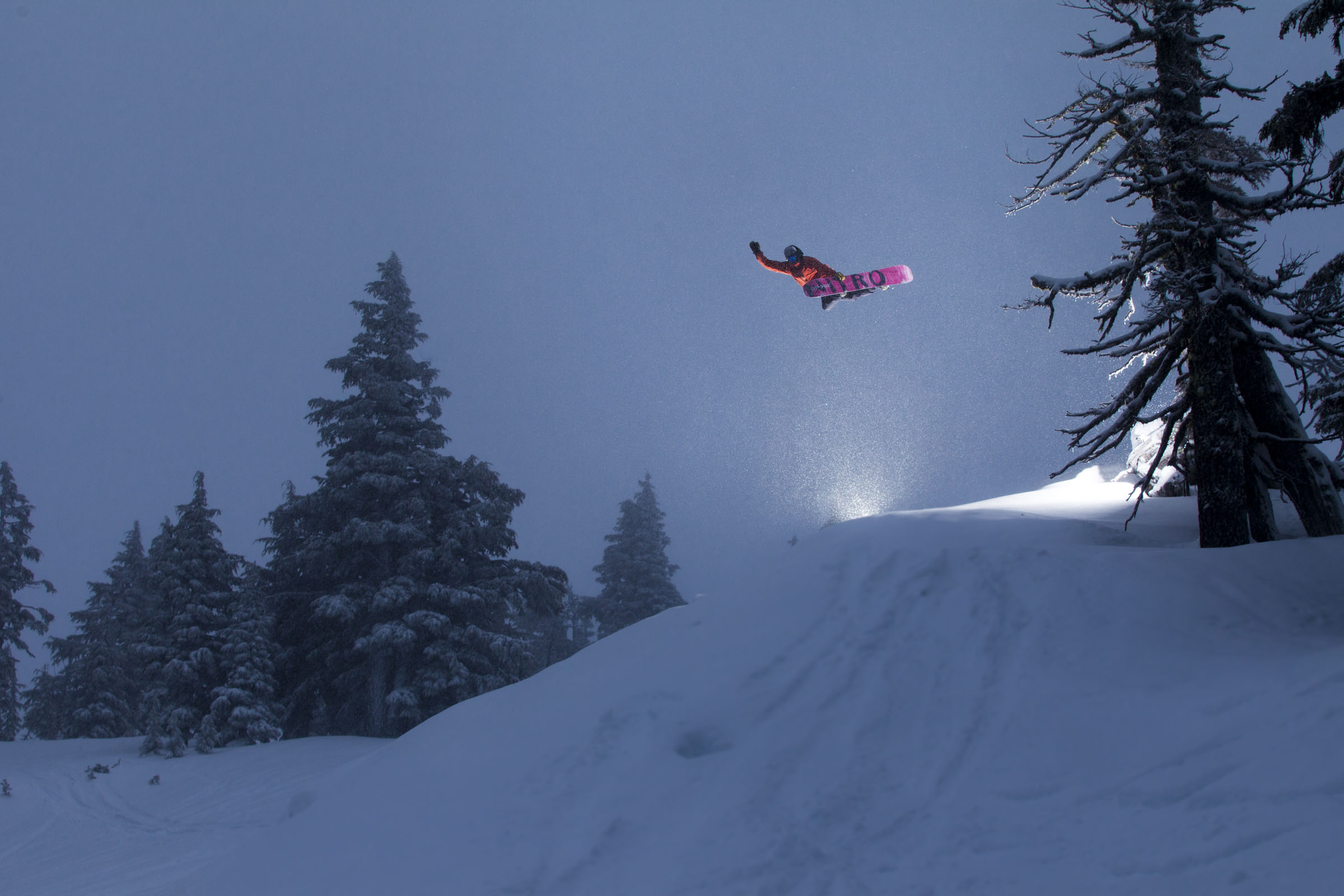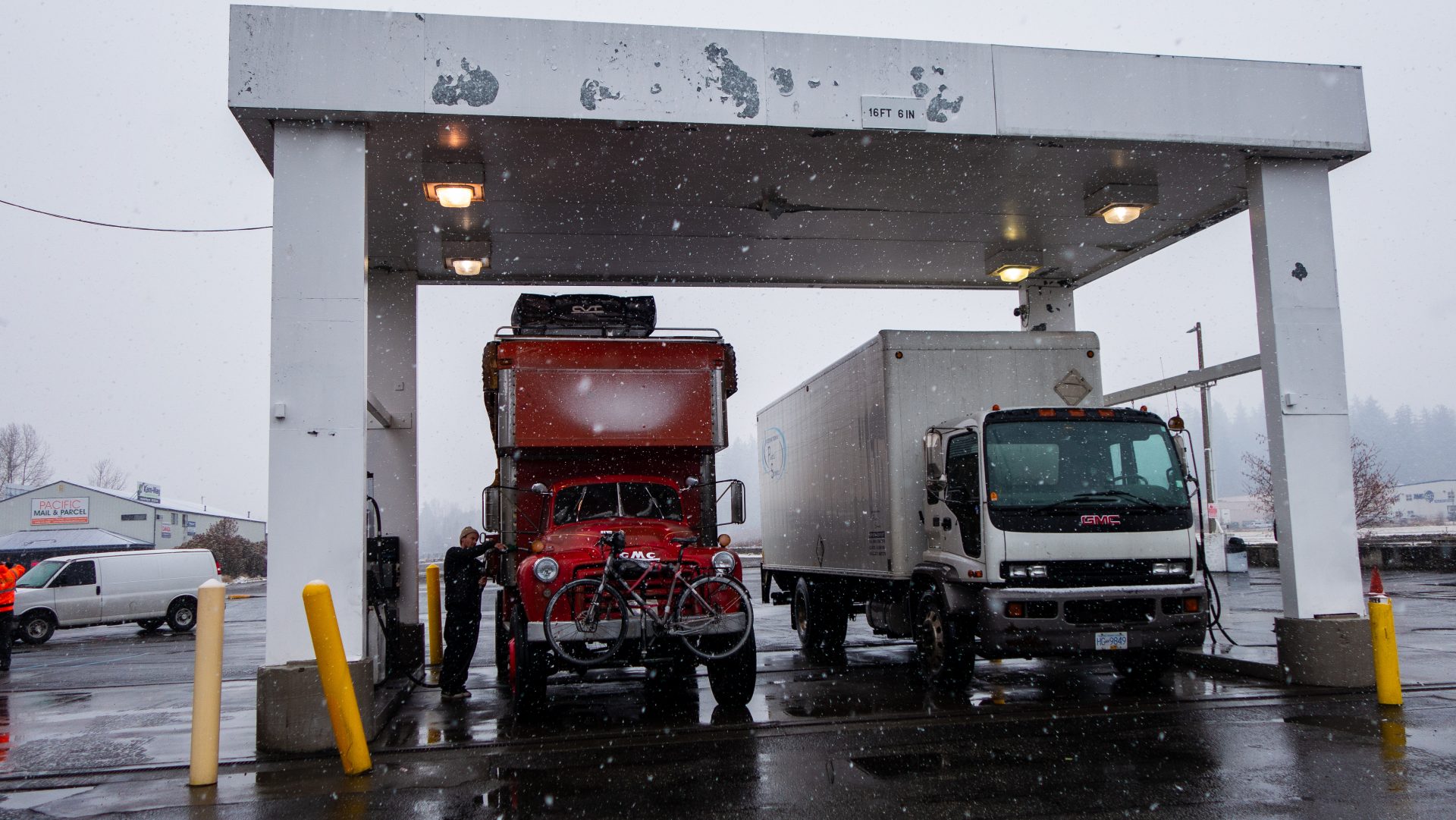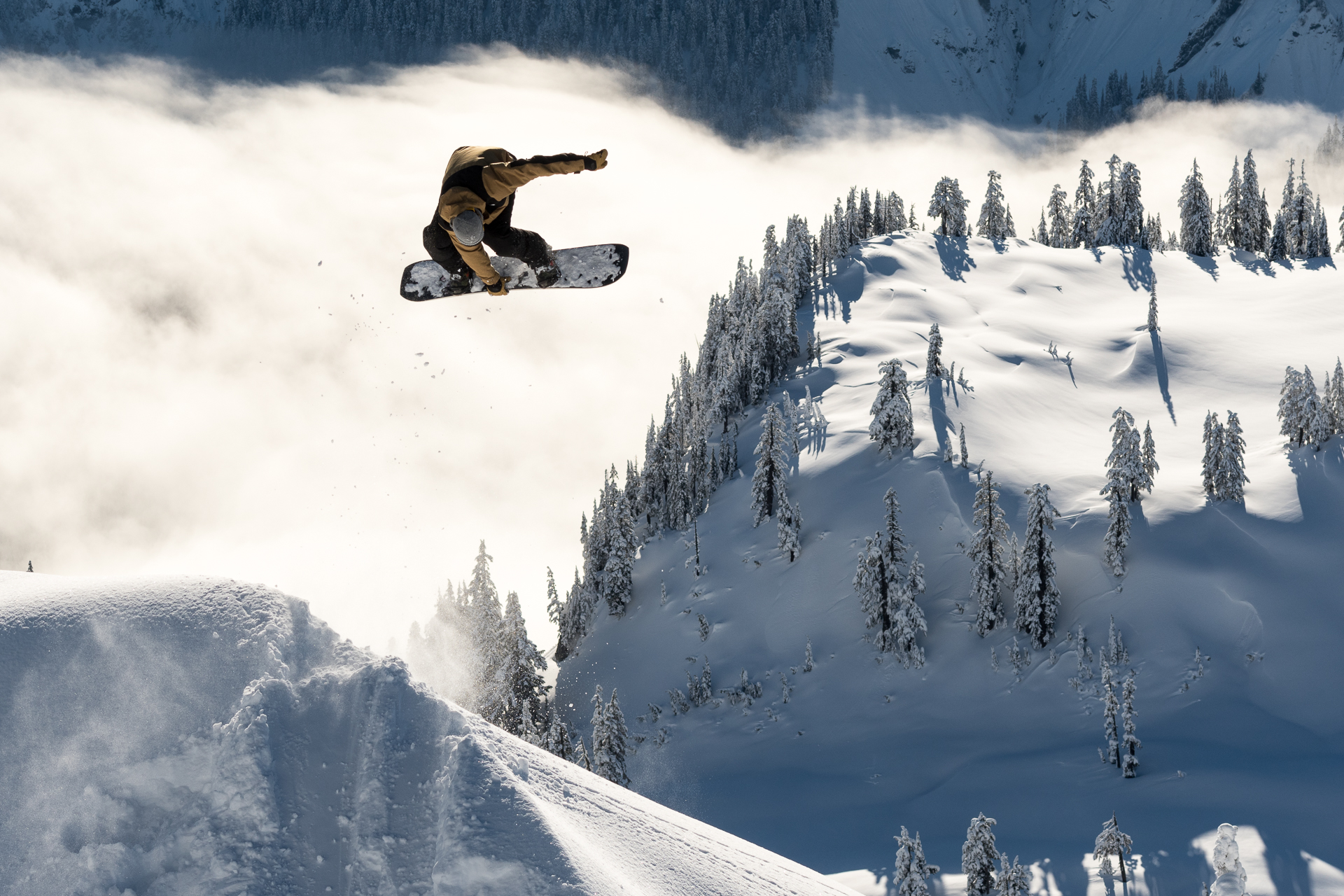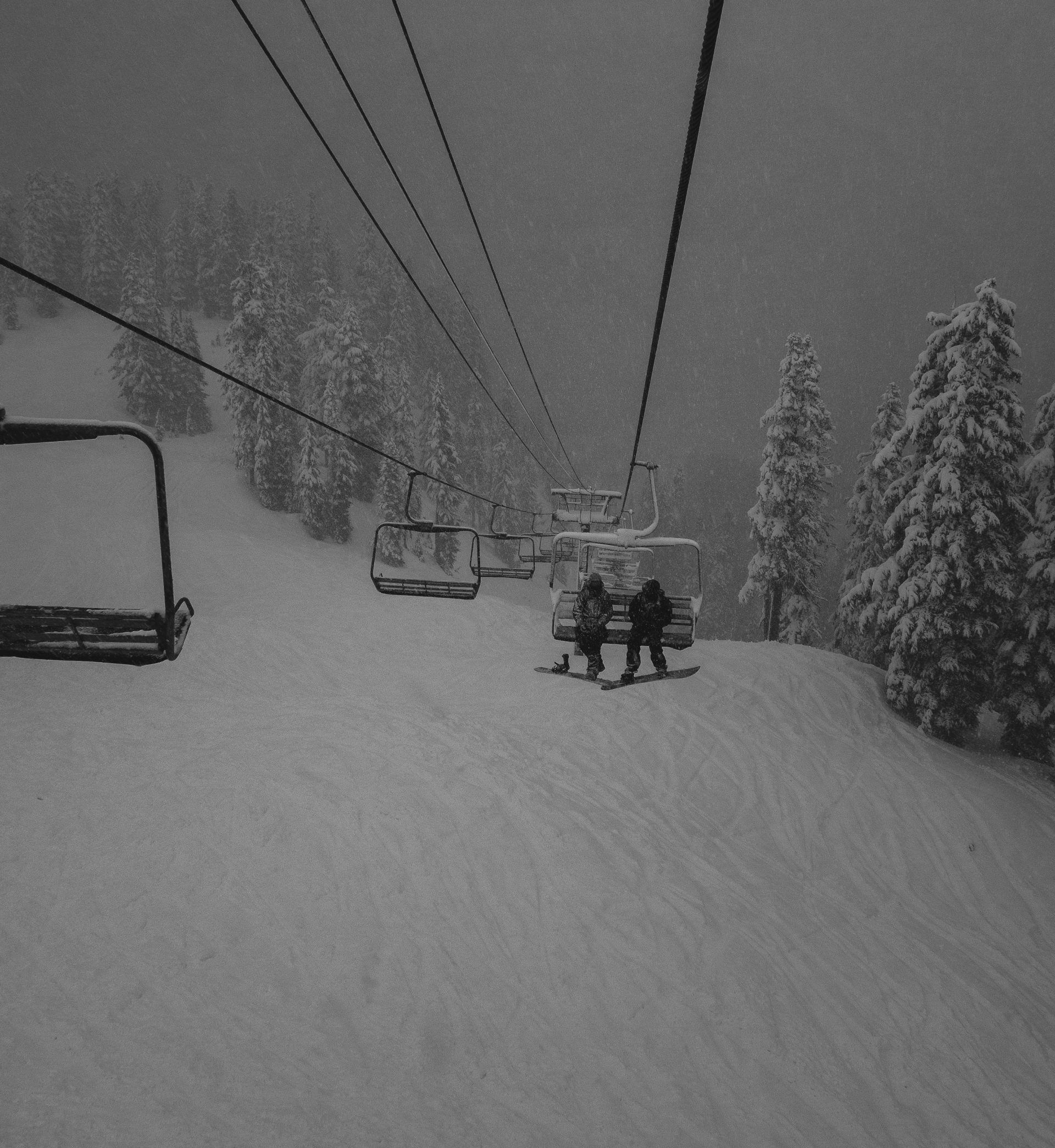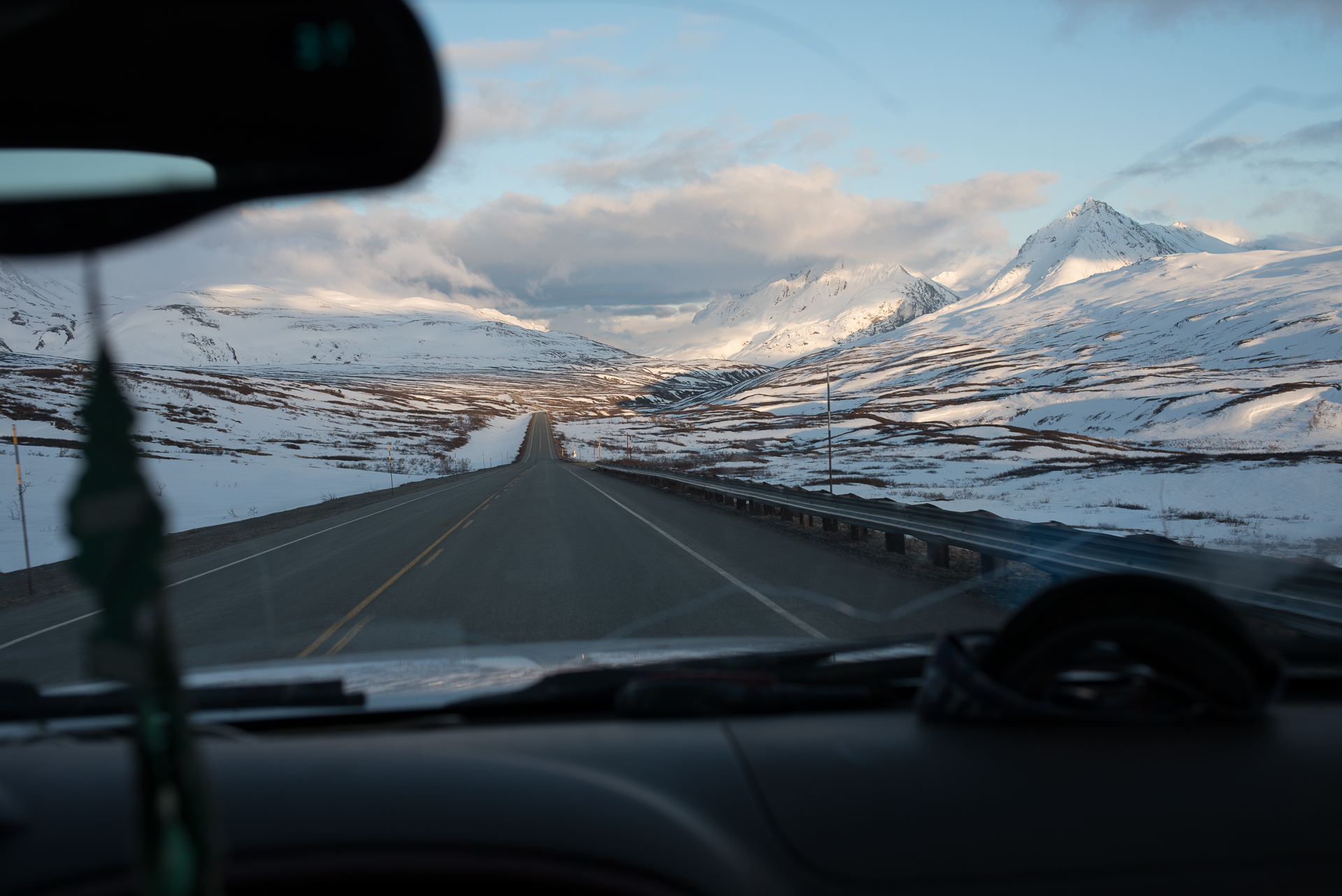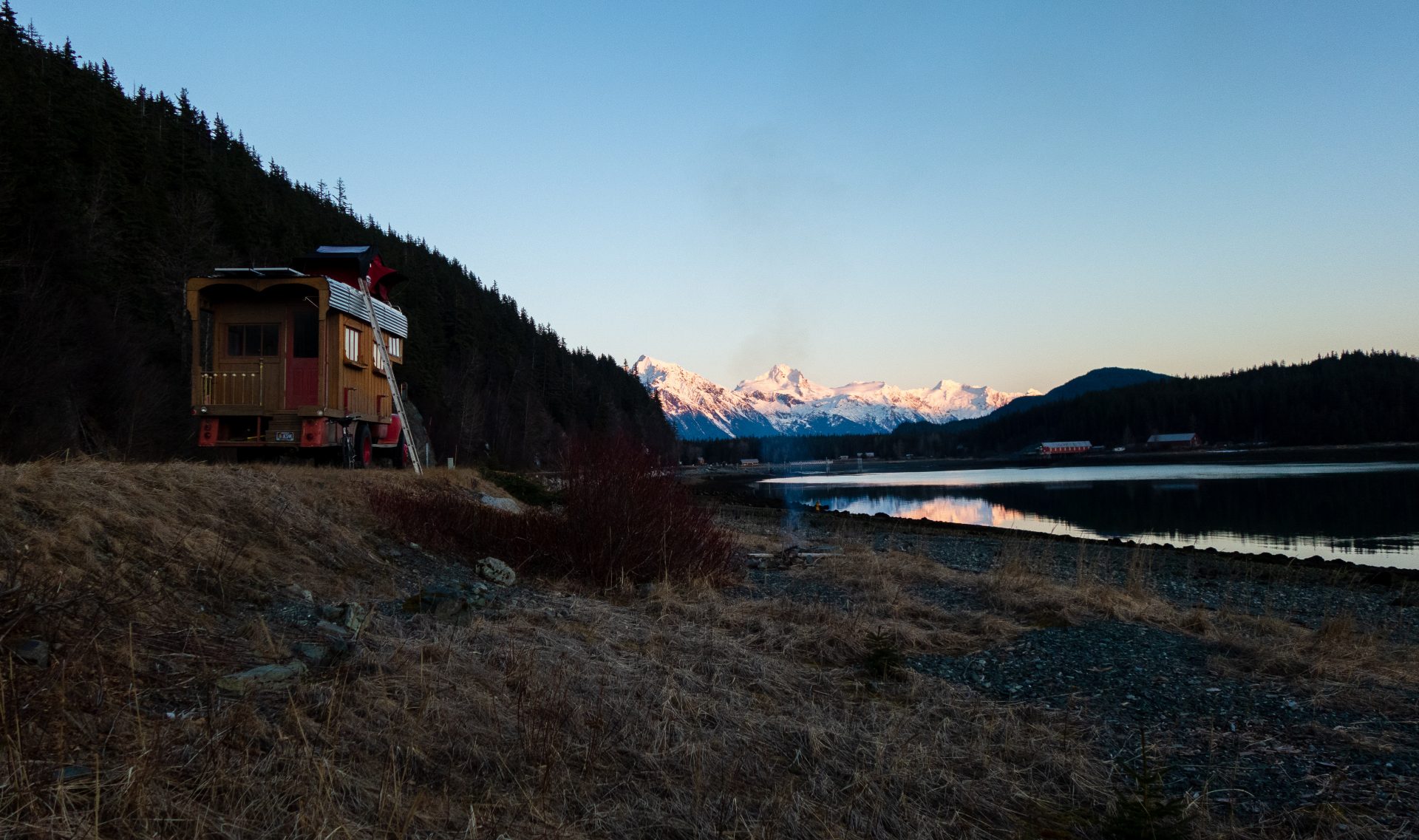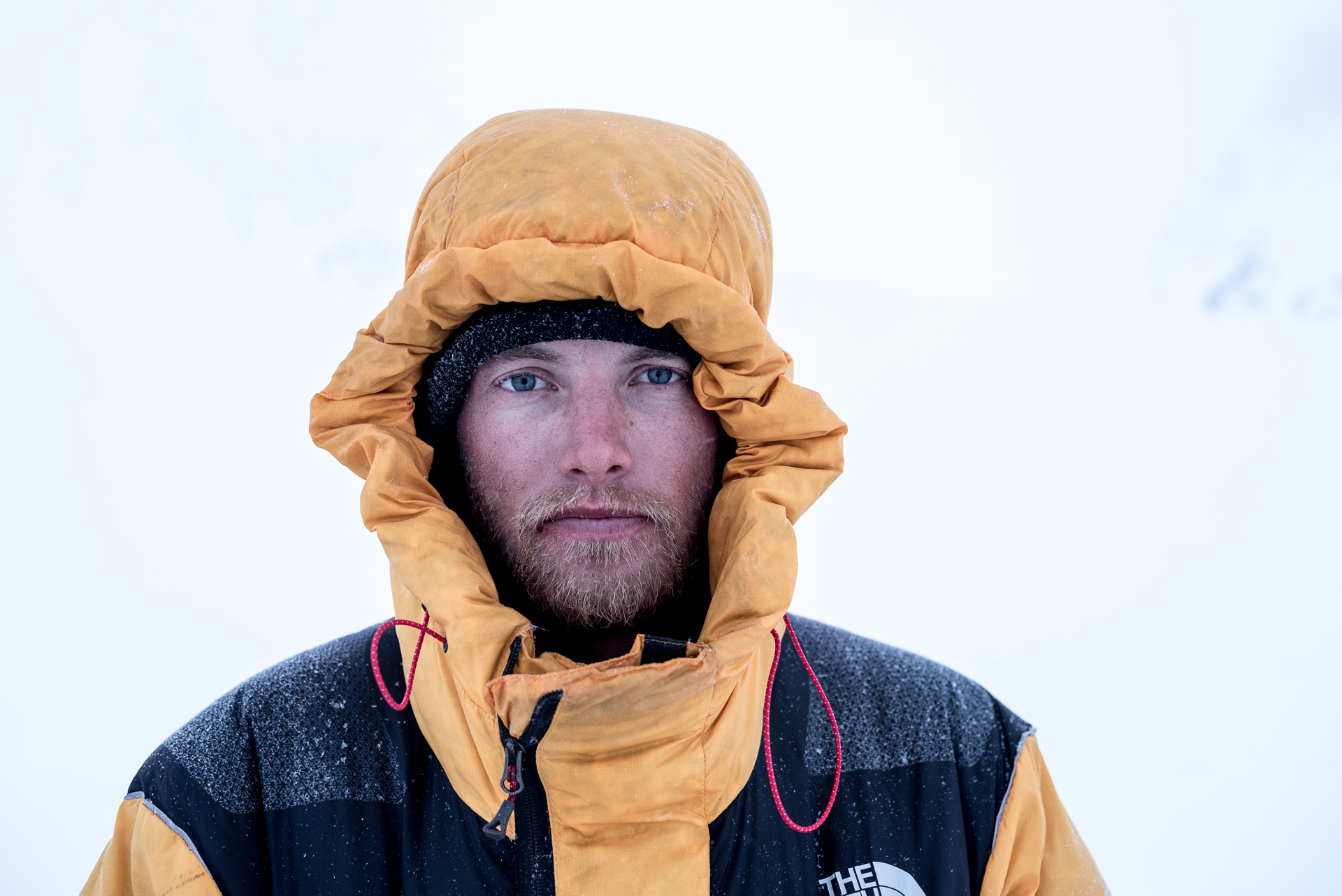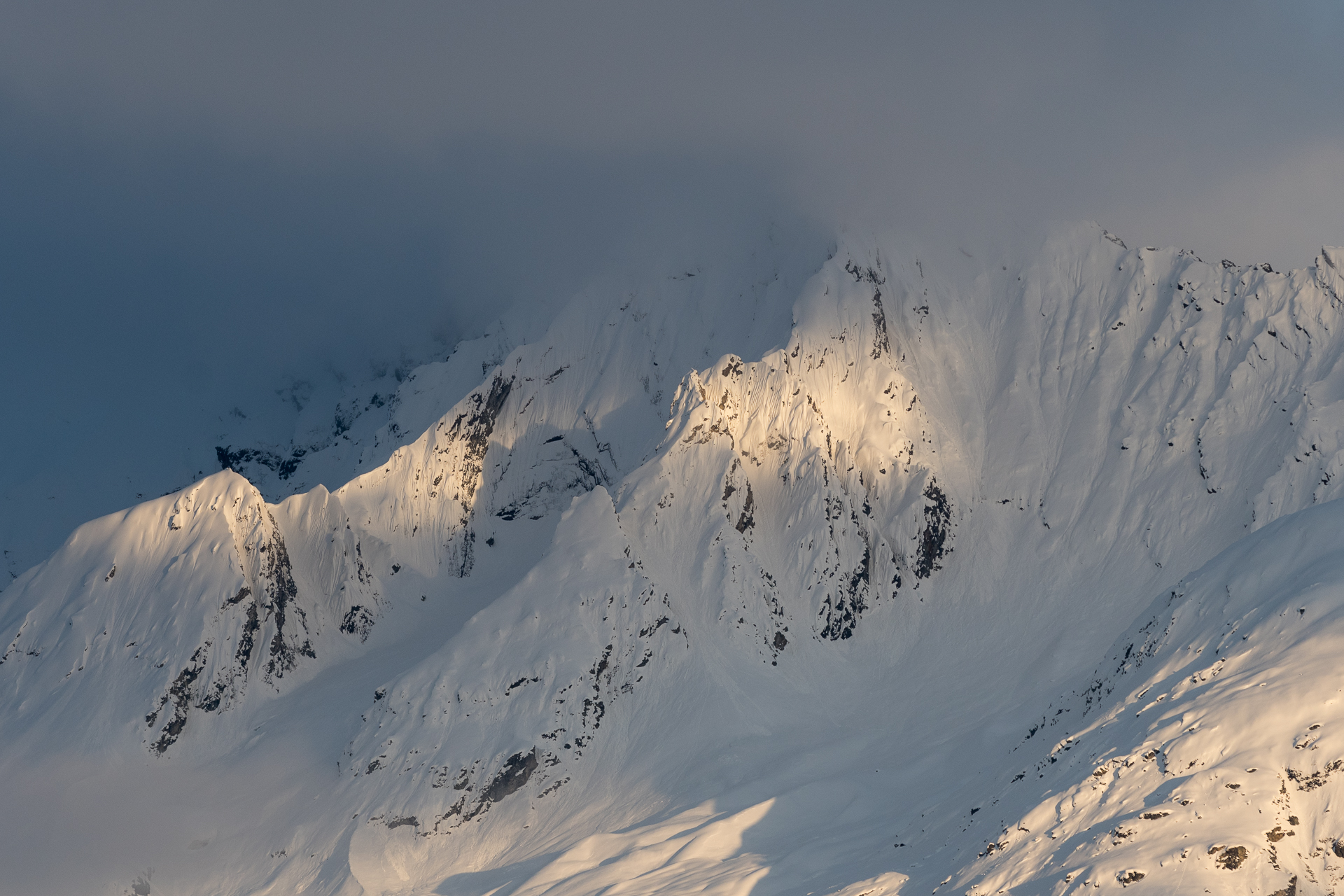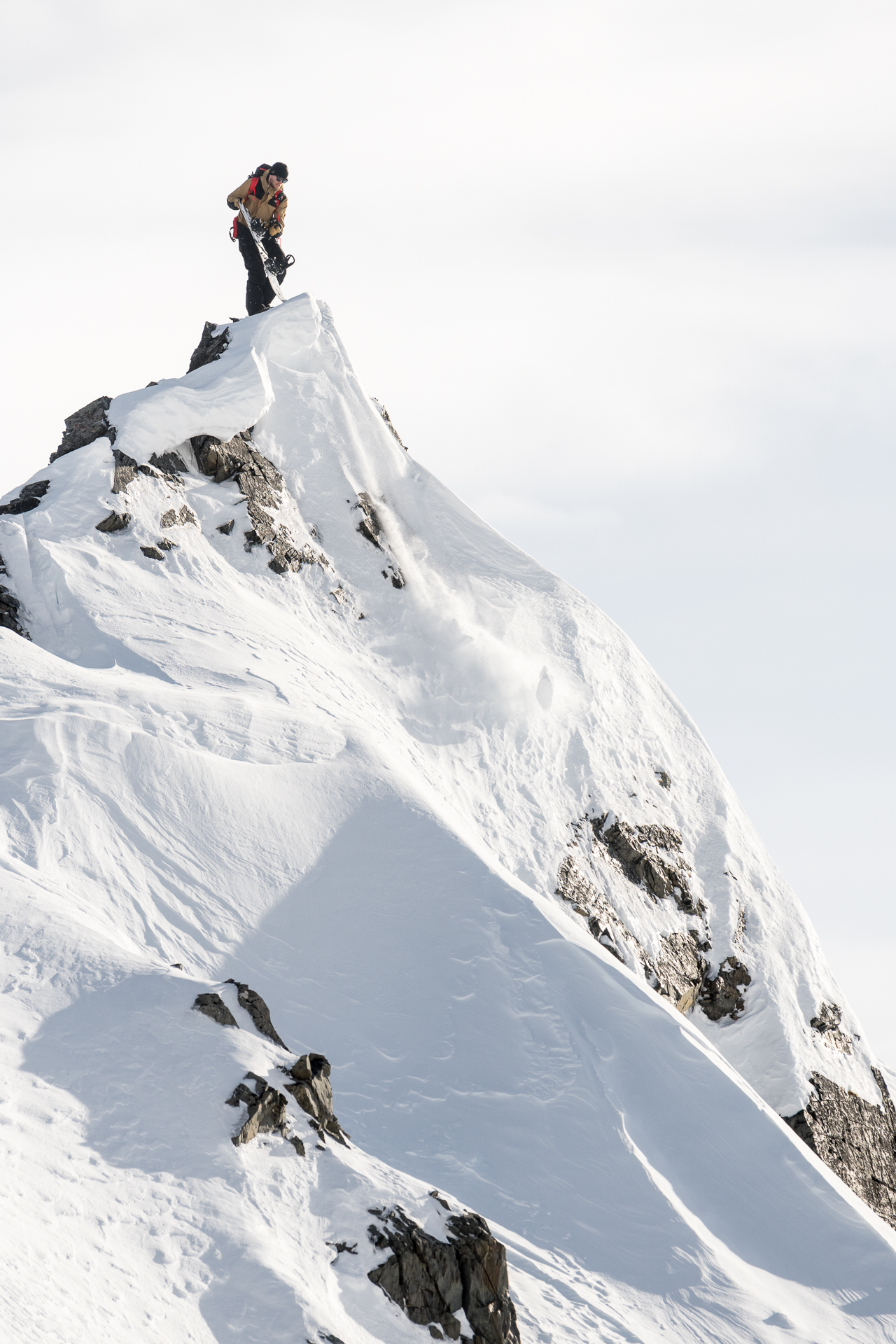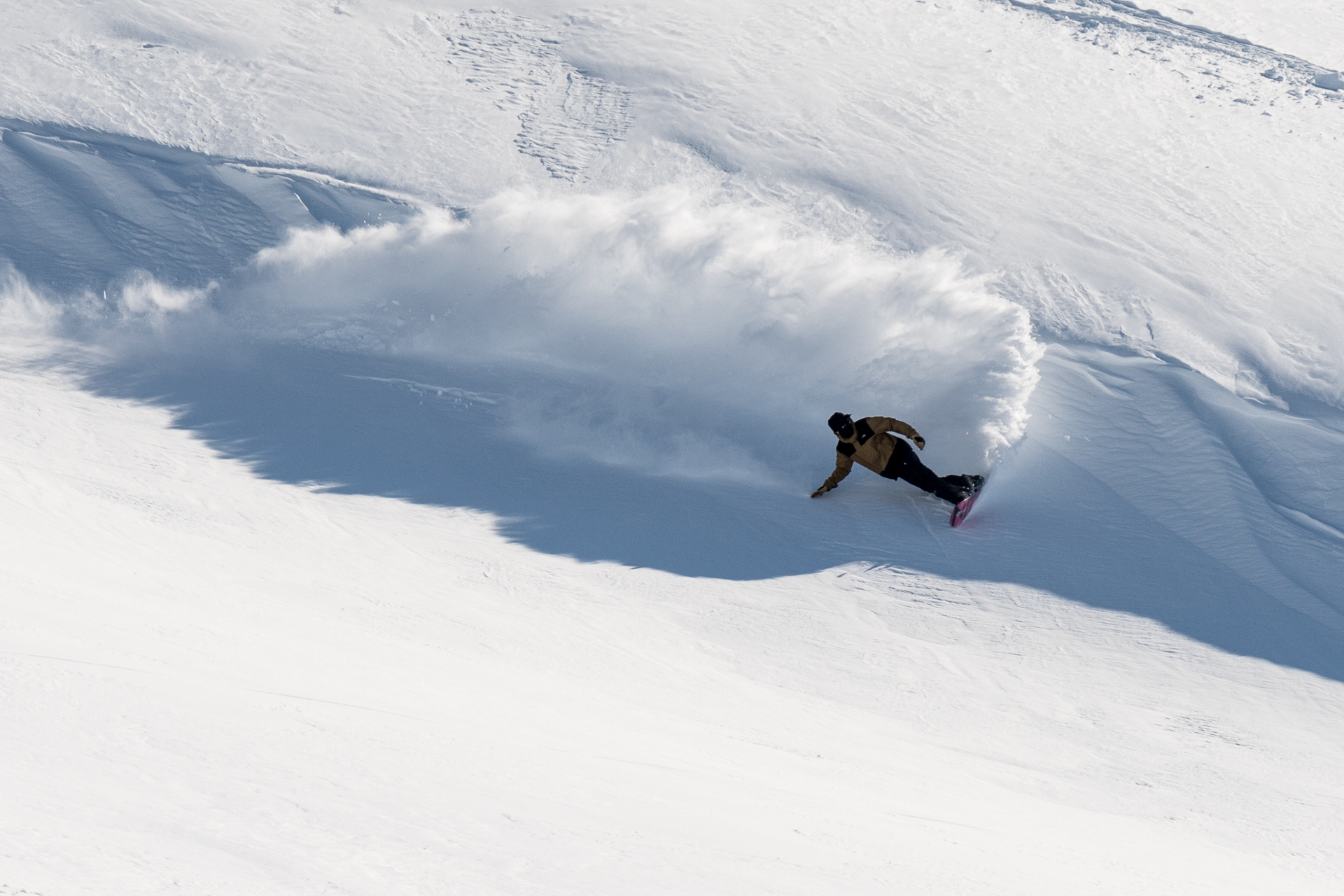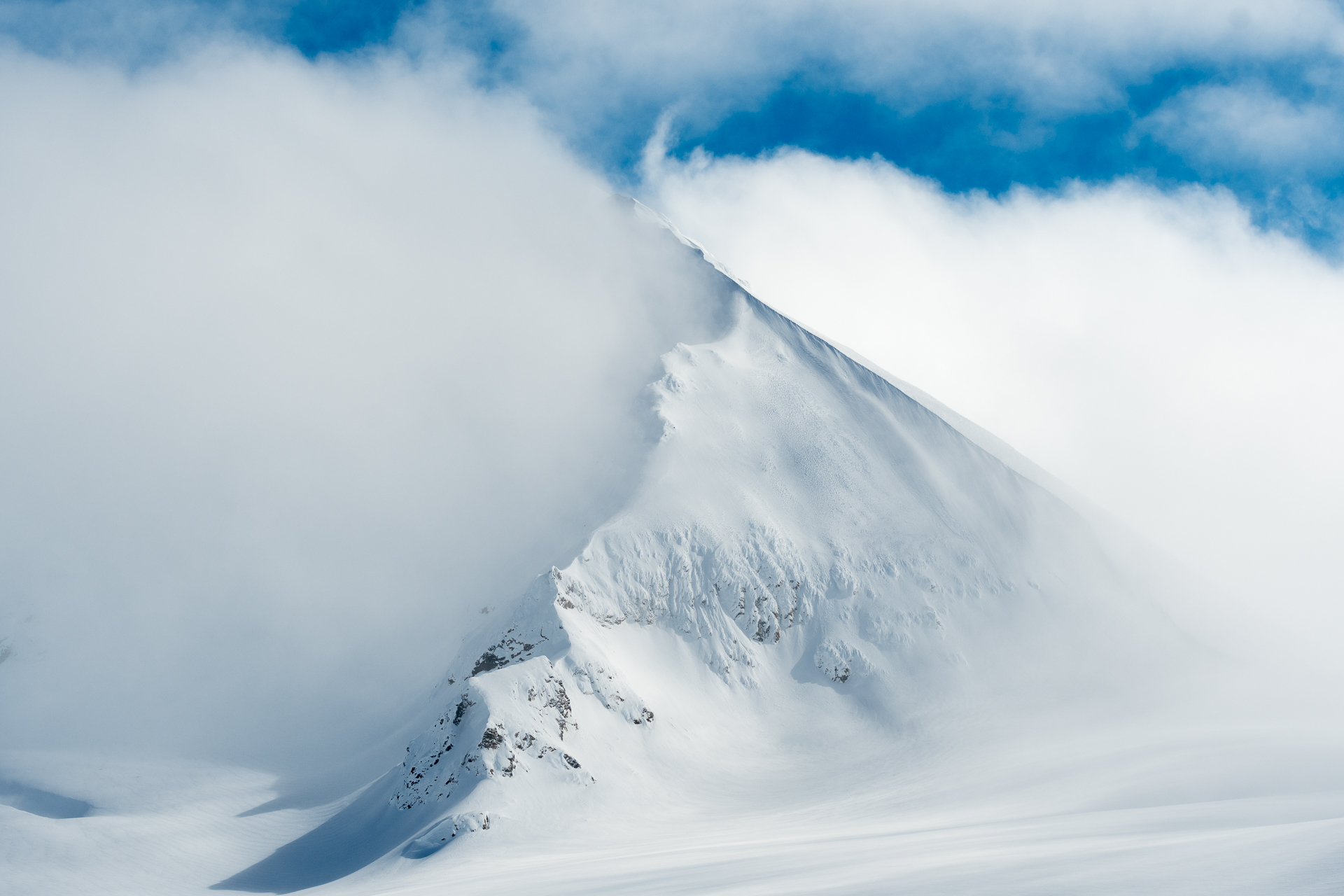Travel
Firetruck to Alaska with Austin Smith
The Road to Haines and the Palmer Project
In 2014 my brother bought a half-converted Firetruck on eBay with plans to complete the process of making it a house on wheels. He and my Dad flew to Illinois to drive the truck back to Oregon together. During the slow and problematic road trip, the truck transformed from unseen potential to headache and remorse. A group of hitch hikers they picked up asked to get out because the truck was too slow. They played leapfrog across the country from auto part stores to gas stations and pulled into Oregon with a top speed of 35mph. What the truck lacked in power, it made up for in engine noise. They both wore construction earmuffs during the drive eliminating conversation, leaving my brother to his thoughts about the truck. Once parked in my parents’ front yard, the Firetruck sat unattended for years.
The firetruck at Mt Hood, OR and ready to roll. Photo: Jeremy Thornburg
I had just finished a test drive of a Forest Service Firetruck I found on Craigslist when my mom called. I told her about the truck, 4×4, 12v Cummins, pop out skylights, lots of potential to become an ultimate camper. She said it was excessive to buy a Firetruck project when there was currently one in her front yard. It was hard to argue her point, so I decided to finish the Firetruck at hand. Insulation, walls, wood stove, solar, batteries, kitchen, storage, water, it was simple and came together quickly but driving it was more troublesome than imagined and it broke down every 30 miles or so. I dropped off the truck with friend/firefighter/diesel mechanic, Jon Carrick, and told him I wanted to drive it to Alaska. Eighteen months later and a new engine, every moving part replaced, custom fabricated to fit and installed it was ready to head north.
Austin at Mt Bachelor. Photo: Bob Plumb
One main point of concern was overall truck height. Finding a definitive number for legal maximum vehicle height was challenging but a common number I came across was 13’ 6” and my truck, 14’4”, is a full eight inches taller than that. Driving an old, oversized, haphazardly built micro dojo is much more strenuous than a Tesla with autopilot. There is no texting, phone calls, sipping tea or even seatbelts. It’s hands on the wheel at 10 and 2. The truck barrels down the road faster than expected, cruising at 65mph, apart from hills.
Over height? Photo: Jeremy Thornburg
I feverishly read every sign I pass, paying extra attention to suggested corner speeds and overpass heights. On I-5 near Tacoma WA was the moment of truth with a 14’3” overpass, one inch shorter than the height of my truck. There is limited time between that warning sign and the actual overpass. I’m in moderate traffic with a dirty windshield because windshield spray didn’t exist in 1953. I read on the trusty internet sign height is measured from the lowest part of the overpass so potentially there might be a taller part than listed. I also read the signs may not account for the roads being resurfaced, making the actual height lower than what is marked. Do I slam on the brakes, pull over to the shoulder and back down I-5 until there is an off-ramp to go around? Or take my chances with an eyeball measurement of a seemingly “higher” part of the overpass? If I am too tall for the overpass, it will rip off the 200 lb. rooftop tent/guest bedroom and catapult it onto the car behind me which could seemingly result in death. I’m not proud of my decision but I held my breath, closed one eye and drove towards the “high part” of the overpass and… squeaked under without any harm.
Austin at Mt. Baker, WA. Photo: Colin Wiseman
Driving the truck through Seattle, WA traffic proved stressful, so I exited I-5 onto Highway 542 heading East to Mt. Baker, WA. A one-month hiatus from the road, snowboarding every day and preparing for the looming conversation with the Canadian border agent comprised my daily activities.
Baker vibes. Photo: Jeremy Thornburg
Driving into BC is intimidating. I have no criminal record and don’t do drugs, but they always make me feel guilty of both. And those experiences come from driving across with a regular vehicle, not a hippie commune stacked on top of a vintage hot rod firetruck. After a month of roughing it on salmon chowder bread bowls, it came time to leave the comfort of Mt. Baker Ski Area and face the dreaded border agent. I was relieved pulling into customs to see I fit underneath any potential height restrictions. He asked the standard questions and to no surprise, he sent me in for a secondary inspection. However, I was so focused on fitting underneath the awning that I ran into the agent’s booth instead. I tried to back up and scoot over but ran into the camera apparatus that takes pictures of your license plate. I was literally stuck in customs. Two officers came out to help navigate the ultimate Austin Powers shimmy and to assure no further damage. Luckily the border agents inside didn’t see what happened outside and after they toured the house themselves, they let us through. Grinning ear to ear, it felt like victory; we made it in.
The Klondike Highway. Photo: Colin Wiseman
But we still had 1,500 miles to go and it was dark and snowing. That night we snuck into a campground, but stealth is not the Firetruck’s strength. After I hit a low hanging power line someone came out at 1:00am to help me navigate through the snow to a camp spot. The next six days were relatively uneventful. However little things like getting gas were exciting, seeing if you fit under the awning or if you must park beside it and hope the fuel hose is long enough. While fueling there’s always a barrage a questions: “Yes it’s an old Firetruck,” “Yes it’s a diesel, it’s a 12v Cummins,” “Yes it’s 4×4” and “Yes, I’m driving to Alaska.”
Parked near Haines. Photo: Jeremy Thornburg
When questions develop to specifics about wheel adapters, suspension preference or motor mounts I try to bullshit my way through but I’m sure it’s evident I am an imposter who did not build it. After driving up through BC and across the Yukon we came back through the US border and finally arrived in Alaska. The truck was officially roadworthy and from there it was 40 miles winding along a river through the Chilkat valley to our destination of Haines, AK.
Austin on a glacier near Thompson Pass, AK. Photo: Colin Wiseman
Kids growing up snowboarding in the Alaskan mountains are the pinnacle of the sport, the crème de la crème and the mountains are glorified in media. The warmer coastal snowpack combined with jagged mountain peaks result in the ultimate snowboard playground. Arguably the greatest place on earth to snowboard, Haines specifically has been a favorite destination for pro snowboarders and skiers for the past 20 years.
The Chilkat Mountains. Photo: Colin Wiseman
Haines is a small fishing town of 2,000 people situated on the valley floor where the Chilkat river meets the Lynn Canal. It is one of the few rivers in the world where all five species of Pacific Salmon come to spawn. As a result, the Chilkat valley is home to the largest population of American bald eagles in the world. In the fall it looks like pigeons in Paris, but more mighty and graceful with salmon, eagles and bears all surviving in relative harmony. This year, my girlfriend Lu came to visit Haines and sharing the valley with someone for their first time I was reminded how majestic and impressive it really is. She was in awe of the scenery and the wildlife and it didn’t hurt that she got to go heli-snowboarding for her first time. Beyond the beauty of the landscape is a proud and passionate community. During this trip I discovered the Lynn Canal Conservation organization and the challenges that Haines is facing.
Snow check. Photo: Colin Wiseman
Constantine Metals, a Canadian mining company is exploring a hard rock deposit (copper, silver, zinc) upstream from Haines and is called The Palmer Project. All mines have an inherent tradeoff. They provide resources that are useful and necessary for our electronics such as this computer I’m typing on. As a result, big unsightly holes are dug and while extracting resources lots of toxic waste is produced. Having a big pile of toxic waste is a bummer, just like going to the garbage dump and seeing that waste is a bummer. The difference between a bummer and a horrible idea is where you put that pile of toxic waste. The Palmer Project is slated to be on a steep mountainside above Glacier Creek which feeds into the Klehini river, a major tributary of the Chilkat River. A big pile of toxic waste on a mountainside in a rainforest where flooding, avalanches and earthquakes are a regular occurrence is a definition of a horrible idea. One thing I’ve learned as a professional snowboarder with five knee surgeries, broken bones and lots of concussions is that gravity always wins. That pile of toxic stuff teetering on the mountain is going to end up in the river. Fishing and tourism are the two largest industries for Haines and damaging the health of the river jeopardizes both.
Powder jam. Photo: Colin Wiseman
Humans have already discovered and extracted the richest mineral deposits throughout the world. That is why areas that are unsuitable for mining are being explored and good judgment is overlooked out of desperation and corporate pressure. The industrial-sized mine would bring short term economic growth to some people, but the longevity and prosperity of Haines is being overlooked. It doesn’t take a geologist or expert miner to see the risks associated with this project, just common sense. The American Rivers Organization says the Chilkat River is the 6th most endangered river in the country as a result of the proposed mine. This valley has influenced and impacted everyone in snowboarding and skiing whether you are aware of it or not.
Mountains worth protecting. Photo: Colin Wiseman
It’s a bit of a stretch trying to connect the Firetruck with the Palmer Project. And I’m not a perfect steward of the earth—I road tripped to Alaska to fly in helicopters to go snowboarding. While I only went snowboarding one day in Haines, learning about the Palmer Project made the trip worth it. The Palmer Project needs awareness and its long-term impacts to be considered and questioned. The public comment period is open until May 15th if you would like to take action:
1) Email Kyle Moselle at Alaska’s Department of Natural Resources requesting more time to comment.
2) Email DOWA on behalf of American Rivers to divest investment in Constantine Metals.
3) Petition to enlist the Chilkat River as a Tier 3 ONRW: https://www.seacc.org/tier_3_action.
Learn more:
1) Great video recently released: http://rockpaperfish.com.
2) Lynn Conservation Canal: http://www.lynncanalconservation.org/what-can-i-do.
3) Earth Justice: Guy Archibald’s explanation of modern day mining in the video at the bottom is great.
